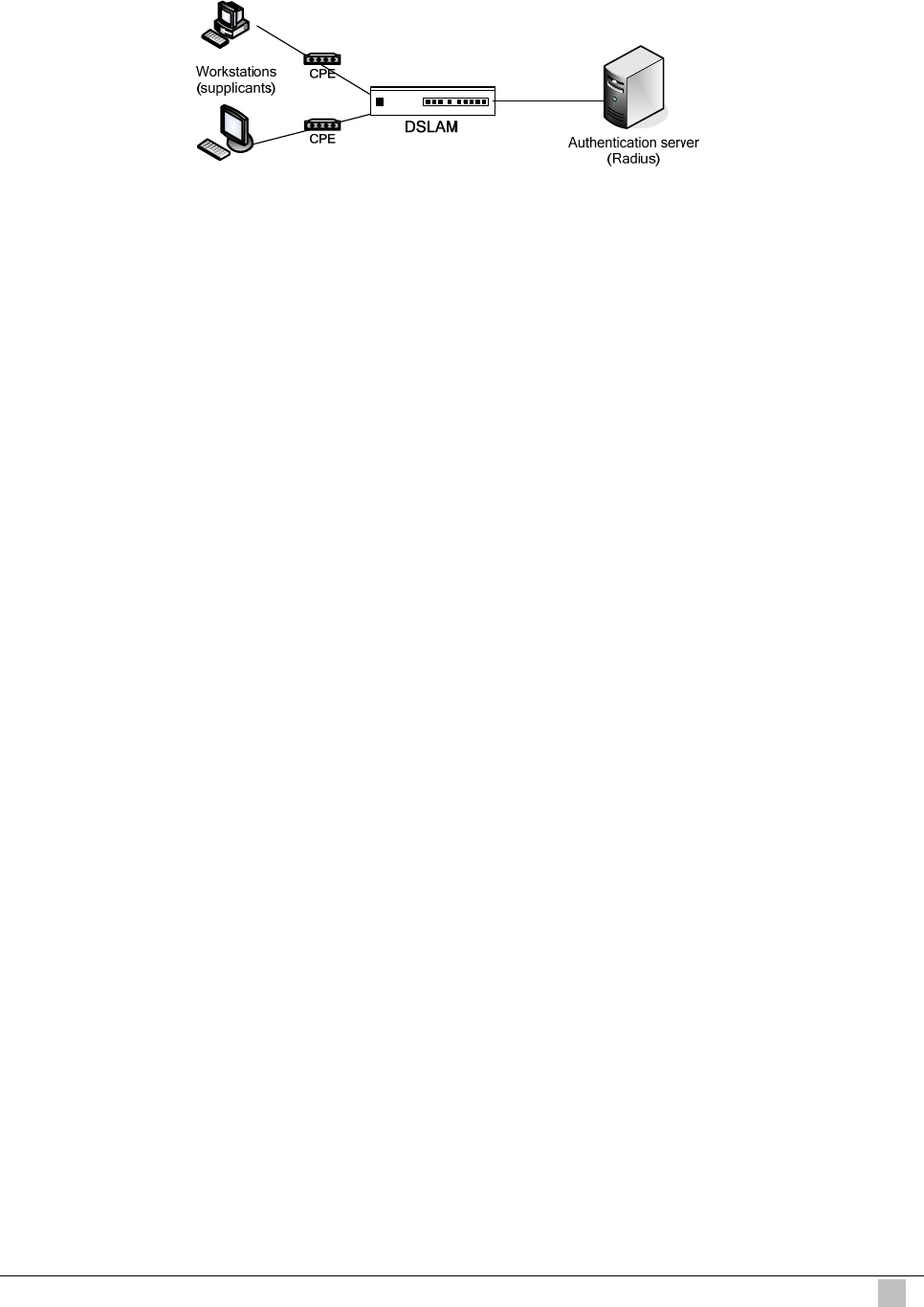
IP DSLAM
701
Device Roles
With 802.1X port-based authentication, the devices in the network have specific roles. (See
below figure).
z Supplicant—Requests access to the LAN and switch services and responds to requests from the
switch. The workstation must be running 802.1X-compliant software.
z Authentication server—performs the actual authentication of the host. The authentication server
validates the identity of the host and notifies the DSLAM whether or not the host is authorized to
access the LAN and DSLAM services. Because the DSLAM acts as the proxy, the authentication
service is transparent to the host. In this release, the Remote Authentication Dial-In User Service
(RADIUS) security system with Extensible Authentication Protocol (EAP) extensions is the only
supported authentication server; it is available in Cisco Secure Access Control Server version 3.0.
RADIUS operates in a client/server model in which secure authentication information is exchanged
between the RADIUS server and one or more RADIUS clients.
z DSLAM (Authenticator)—Controls the physical access to the network that is based on the
authentication status of the host. The DSLAM acts as an intermediary (proxy) between the host and
the authentication server, requesting identity information from the host, verifying information with the
authentication server, and relaying a response to the host. The DSLAM interacts with the RADIUS
client. The RADIUS client encapsulates and decapsulates the EAP frames and interacts with the
authentication server.
z When the DSLAM receives Extensible Authentication Protocol over LAN (EAPOL) frames and
relays them to the authentication server, the Ethernet header is stripped and the remaining EAP
frame is reencapsulated in the RADIUS format. The EAP frames are not modified or examined
during encapsulation, and the authentication server must support EAP within the native frame
format. When the DSLAM receives the frames from the authentication server, the server's frame
header is removed, leaving the EAP frame, which is then encapsulated for Ethernet and sent to the
host.


















